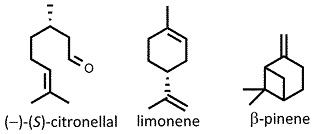 Citrus hystrix
Citrus hystrix
lime leaf • makrut lime • papeda
Back to “Culinary herbs: lime leaf (Citrus hystrix)*; makrut lime (Citrus hystrix)*”
Back to “Spices: makrut lime (Citrus hystrix)fr”
Citrus hystrix DC. (Rutaceae); makroet-lemmetjie, lemmetjie-blaar (Afrikaans); ba bi da (Chinese); limettier hérissé (French); Indische Zitrone (German); jeruk purut (Indonesian); limau purut (Malay); ma kruut (Thai)
DESCRIPTION Lime leaves are easily recognized by the winged leaf stalk (petiole) that is the same size and shape as the leaf blade itself. Also distinctive are the scalloped margins and the fresh lemon aroma. The fruits are small, rounded to pear-shaped and usually have a bumpy surface.
THE PLANT A small, thorny tree with winged and leaf-like petioles, purple-tinged flowers (not pure white as in true limes) and rough, warty fruits.1,2
ORIGIN The tree has been cultivated for such a long time in Southeast Asia that its original distribution and origins are now obscure.1 It is found over large parts of tropical Asia (Sri Lanka to Myanmar, Thailand, Malaysia, Indonesia and the Philippines).
CULTIVATION Trees are easily cultivated in tropical regions and they adapt quite well to temperate conditions provided there is no severe frost. They are ideal for large containers.
HARVESTING Leaves and green fruits are harvested and sold fresh on local markets. In recent years, dried lime leaves (or powdered leaf) have become readily available amongst the herbs and spices in most supermarkets. The leaves and fruits may also be stored frozen to retain the flavour.
CULINARY USES Fresh leaves and fruits are considered to be much better than the dried ones. Their aromatic and astringent flavour is strongly associated with the cuisines of Southeast Asia, which are becoming increasingly popular in Western countries. The fruit rind (zest) is commonly used in spicy Thai curries and other dishes, including the famous tom yam soup. The leaves give a recognizable aroma and flavour to Thai and Vietnamese chicken dishes. In Bali, Cambodia, Java, Laos, Malaysia, Myanmar, Thailand and Singapore, whole leaves are liberally added to soups and stews, as well as fish, seafood and chicken dishes (often alongside Indonesian bay leaf). Shredded leaves or grated rind can be mixed into curries, salads, sauces, soups and spice pastes. The fruits yield only small amounts of very acidic juice but are sometimes used in marmalade or as candied whole fruits.
FLAVOUR COMPOUNDS The characteristic aroma of makrut lime leaves is due to (–)-(S)-citronellal, which is the main compound in the essential oil (up to 80%).3,4 Minor constituents include citronellol, nerol and limonene.3,4 The fruit peel of makrut lime and common lime are chemically quite similar, with limonene and β-pinene as main compounds in both.3,4

NOTES The small, kumquat-like fruits of kalamansi or calamondin (Citrus madurensis, also treated as ×Citrofortunella microcarpa) are used in the Philippines to flavour dishes and desserts (and to make drinks, with liberal amounts of sugar and honey added to the sour juice).
1. Saunt, J. 2000. Citrus varieties of the world. Sinclair International Ltd, Norwich.
2. Burkill, I.H. 1966. A dictionary of the economic products of the Malay Peninsula, Vol. 1, pp. 567–568. Crown Agents for the Colonies, London.
3. Lawrence, B.M., Hogg, J.W., Terhune, S.J., Podimuang, V. 1971. Constituents of the leaf and peel oils of Citrus hystrix DC. Phytochemistry 10: 1404–1405.
4. Jantan, I., Ahmad, A.S., Ahmad, A.R., Ali, N.A.M., Ayop, N. 1996. Chemical composition of some Citrus oils from Malaysia. Journal of Essential Oil Research 8: 627–632.